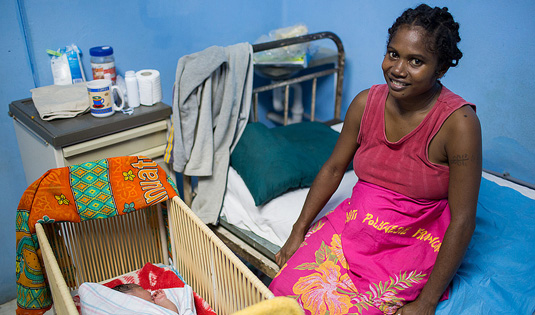So More Can Live
With a little money and basic care, more mothers and babies could survive.

“Every two minutes, somewhere in the world, a woman dies from complications of pregnancy,” according to the World Health Organization’s Partnership for Maternal, Newborn & Child Health. “In these same two minutes nearly 30 young children die of disease and illness that could have been prevented or effectively treated.”
The good news is that maternal deaths worldwide dropped by nearly half in the two decades between 1990 and 2010—from 543,000 per year to 287,000. In the same period, deaths among children under age five declined from 12 million a year to 7.6 million.
But much more needs to be done—and it could be with a modest infusion of cash. According to a new report in The Lancet, an additional 113,000 maternal deaths, 531,000 stillbirths, and 1.325 million neonatal deaths could be prevented by the year 2020 with some very basic but effective interventions, the cost of which would be a mere 91 U.S. cents per person per year. Most important, the funds would provide “facility-based care” in clinics or hospitals where both basic and emergency care can be offered to mothers and their babies.
According to Zulfiqar Bhutta, director of the Center of Excellence in Women and Child Health at Aga Khan University in Karachi, Pakistan, and the report’s lead author, only 63 percent of all births in 75 “high burden” countries—nearly all of them in South America, Africa, or Southeast Asia—take place with a skilled attendant present. “That means that almost a third are born in the hands of unskilled attendants, and it is therefore extremely important for such births to take place in safe settings in appropriate facilities,” Bhutta wrote to me via email.
The presence of skilled birth attendants and provision of obstetric care—including monitoring of labor and assisted vaginal delivery or caesarian section—has been shown to reduce newborn deaths by 40 percent. Promotion of simple “clean birth behaviors” in birth attendants, such as hand washing with soap and water, can reduce the risk of omphalitis (infection of the umbilical stump, a common cause of neonatal death in developing countries) by 31 percent, and neonatal tetanus by 42 percent. Cleaning the umbilical stump with antiseptics can reduce the incidence of omphalitis by 27 percent and the risk of neonatal death by 23 percent.
Facility-based care can also offer interventions that may be vital to infant survival: neonatal resuscitation for babies who do not breathe at birth, for example. For small, premature, and sick babies, hospitals can offer life-saving treatments for respiratory distress syndrome—a breathing disorder of preemies—as well as guidance on skin-to-skin kangaroo care and breastfeeding support. These forms of care, the authors write, can reduce neonatal mortality by 51 percent and the risk of life-threatening sepsis, a bacterial infection of the blood, by 58 percent.
But interventions to reduce maternal and newborn death—including improved sex education and school-based clinics—must begin earlier, as well. Globally, about 16 million girls aged 15 to 19 years give birth every year, as do two million girls younger than 15. Many of these girls are forced into marriage. Physically immature adolescent girls are at high risk of labor and delivery complications, such as obstructed labor, and the risks of stillbirth, preterm birth, and asphyxia are 50 percent higher among these women.
The advantages of these interventions would be profound, says Bhutta, who described cost-effective interventions to reduce newborn deaths in a 2005 paper published in The Lancet. Benefits include reduced overall healthcare costs, improved health and nutrition of mothers, empowerment of women and girls leading to stronger communities and societies, and increased and sustained economic development.
“I have always worked with poor and marginalized communities and especially women and children,” Bhutta told me. “Newborn care is a special passion and with my colleagues, we tried to raise the profile of global newborn care and survival in 2005 as well. The fact that there has been so little change over this period prompted us to take up this issue again and focus attention on not just the newborns but also those who die during the process of childbirth.”

